The city savvy folks from D.C. Metro Food Tours took our group on a walking tour of Little Ethiopia on our first full day in Washington. The tour centered around the U Street Corridor and Shaw neighborhoods, taking us through the heart of the world’s largest Ethiopian enclave outside of Ethiopia. The vibe in this part of town couldn’t have been any more different than the one we left in Capitol Hill. The gritty streets and laid back feel was a refreshing change of pace.
I was introduced to Ethiopian cuisine my first year out of college while living in Oakland, California. The name of the restaurant has since escaped me, but the tastes and memories from that meal remain quite vivid. From the sour-tinged injera to the syrupy sweet honey wine to the sensation of eating with my finger tips, Ethiopian food left a great impression on me and I’ve adored it ever since.
Our tour began at Zenebech Injera, arguably the best Ethiopian restaurant in the District according to our tour guides. In addition to serving up some of the city’s best food, Zenebech also provides the injera for a bulk of the area’s restaurants. For those unfamiliar with Ethiopian cuisine, injera is a spongy and springy flat bread made of teff flour. It is not only used to deliver food into one’s mouth, but it doubles as a serving platter as well.
The smiling and amiable Ms. Zenebech gave our group an injera making demonstration before feeding our eager bellies. Cameras weren’t allowed inside her kitchen, but this video on YouTube captures the experience quite well. In layman’s terms, injera is like a steamed sourdough pancake.
After the kitchen demonstration, we were fed a feast of Ethiopian delights. The first platter to arrive was mostly vegetarian and included lentils, collard greens, beets, tomato salad, and shiro (spiced ground yellow split peas with fried onions and berbere). Each little dish was distinctly flavored and brimming with exciting spices. We each grabbed a round of injera, ripped off a generous corner, and went to town on the platter. Everything tasted so good, so fresh, and so delicious.
The second platter was equally amazing. It included a beef tartare dish called kitfo that was mildly spiced so that the meat’s natural flavor was front and center. It was accompanied by a mound of dulet (lean minced beef), a tomato salad, house made cottage cheese, and a bit of mitmita (ground African Birdseye chili peppers, cardamom seed, cloves, and salt) for dipping.
Everything that I tasted at Zenebech’s rocked my little taste buds, but it was the doro wat that my injera could not stay away from. Considered the national dish of Ethiopia, doro wat is a spicy stew with fall-off-the-bone chicken and hard boiled eggs. The hit of spice comes from cayenne pepper and berbere.
I am proud to report that I had to be pulled away from Zenebech’s in order to not miss our next appointment. Honestly, I could have stayed there all afternoon, dredging my injera through a bit of this and a bit of that. Swoon…
—
Stop number two on the Little Ethiopia food tour took us to Habesha Market and Carry-Out, where we experienced a classic breakfast spread.
As we waited for the food to arrive, I explored the shelves lined with dried goods and spices. In retrospect, I should’ve procured some berbere to try my hand at Ethiopian cooking at home. I will have to seek some out in Los Angeles soon.
The first dish to arrive was the special kinche, which consisted of cracked wheat sauteed with herbed butter and a bevy of spices including mitmita. The grains were dotted with fresh tomatoes and chopped onions. The texture of the cracked wheat was fluffier than expected.
Next, we dug into a hearty stew with broad beans, tomatoes, jalapenos, onions, and awaze. It was served hot with a dollop of cool yogurt and a fried scrambled egg. This stick-to-your-bones breakfast is called “special foul” on the menu. Special it was, foul it was not.
Gastro real estate was at a deficit by the time the awaze tibs arrived, but an internal pep talk brought me around. The tender cubes of beef were marinated and cooked with tomatos, jalapenos, garlic, onions, and berbere sauce. The tibs tasted great paired with the kinche.
And finally, a thoroughly delicious platter of stewed beef tripe and beef tongue in a mild sauce. I was full as heck at this point, but could not resist a couple fork-fulls of my favorite offal.
—
Our third and final stop on the food tour brought us to Little Ethiopia Restaurant, which was located directly across the street from Habesha.
Here, we observed a traditional coffee ceremony, which is an integral part of Ethiopian social and cultural life. “An invitation to attend a coffee ceremony is considered a mark of friendship or respect and is an excellent example of Ethiopian hospitality,” according to Epicurean.com.
The ceremony began by roasting green coffee beans over hot coals. Once the beans were properly browned, each member of our group took in the aromatic smoke by wafting it towards us. Finally, the beans were ground in the kitchen and made into coffee.
As we waited for the coffee to be prepared, we enjoyed freshly made sambusas. The triangular parcels were filled with fried beef, green peppers, jalapenos, and onions.
Soon after, we were each poured a little mug of dark coffee. There was sugar and cream to be had on the side, but I drank mine straight to get a true sense of the product. The coffee’s taste reminded me of dark chocolate with its sour notes and slightly bitter tones.
The Little Ethiopia Food Tour was nothing short of awesome. I learned a whole heck of a lot and tasted some seriously unforgettable dishes. D.C. residents are truly lucky to have such a vibrant community in their backyards. Dig in, folks!
—
Zenebech Injera
608 T Street, NW
Washington, DC 20001
Phone: 202-667-4700
Habesha Market and Carry-Out
1919 9th Street, NW
Washington, DC 20001
Phone: 202-232-1919
Little Ethiopia Restaurant
1924 9th Street, NW
Washington, DC 20001
Phone: 202-319-1924

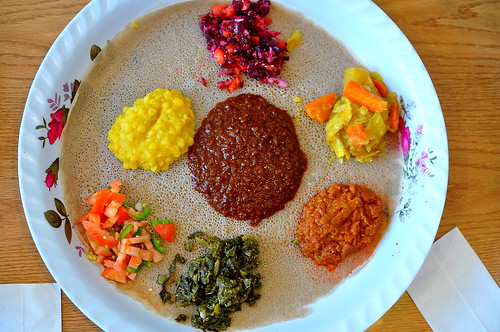
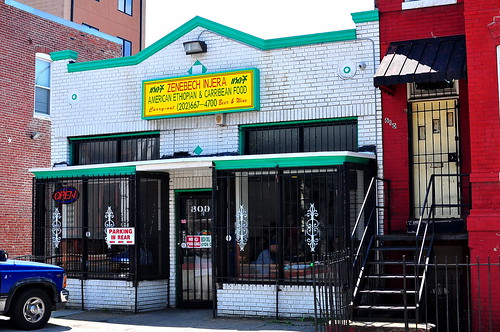



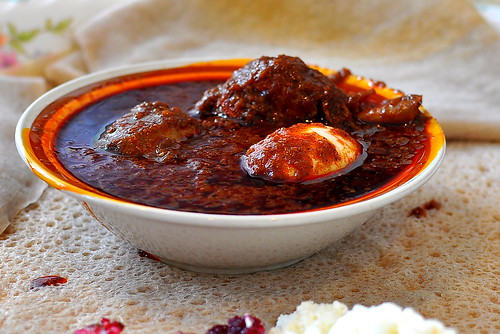
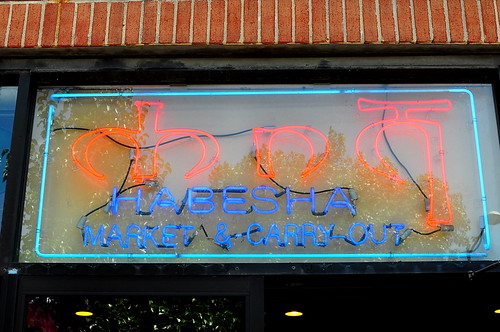
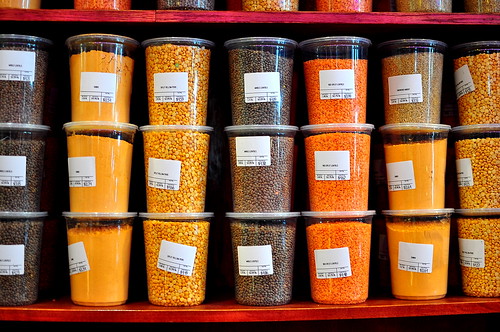
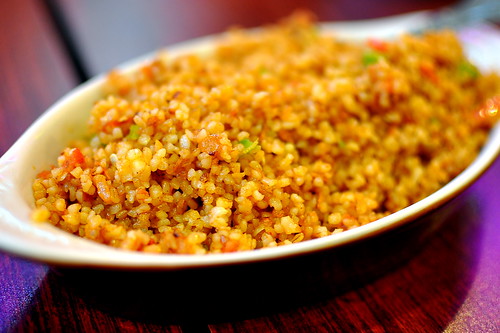
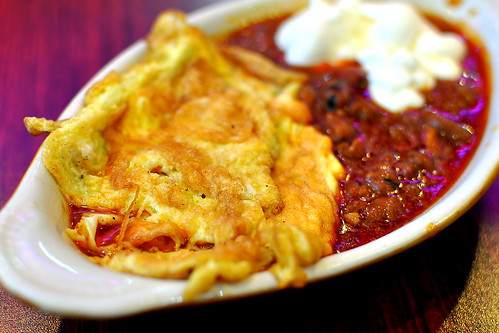
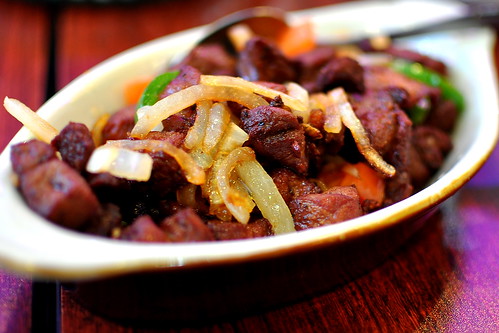

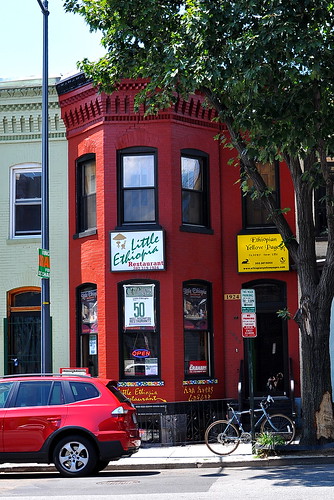
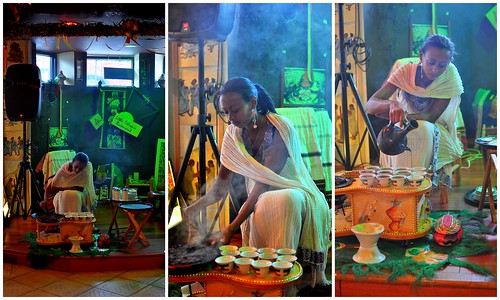
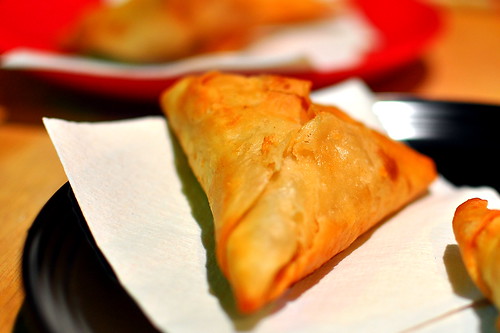

I am so envious, I loooove ethiopian food–there is a large Ethiopian community in Minnesota where I went to college, and I have been quite bereft since moving to NYC…there are a few ok places here but nothing rivaling the amazing hole-in-the-wall spots in St. Paul, and definitely no injera in my local grocery store! Perhaps a bus ride down to D.C. is in order!
Hi Gastronomer,
Nice! 🙂 I’ve always heard great things about Washington D.C.’s Ethiopian food. It looks and sounds absolutely delicious. Thanks for the review.
Can’t get to DC anytime soon, but you just inspired a trip to Fairfax Ave.
Valentina – What’s your fave Ethiopian spot in LA? I’ve got a killer craving too!
that’s some serious eating. i feel stuffed just looking at your pics! never had ethiopian food before.
We ate at Little Ethiopia on our last trip to DC and it was amazing.
Cathy, the only one I’ve been to is Nyala on Fairfax. I’m a total novice when it comes to Ethiopian, but that’s usually the place people bring up. I hear Messob is good, too.
We should do an exploratory mission, haha.
Val – Let’s do it! LOVE Ethiopian food and can’t imagine not having any till my next visit to Oakland or DC 🙂
I never realized DC had a Little Ethiopia (ok I’ve only been once!)
There were quite a few dishes in your post I’ve never tried before. I have to ask though, how were they compared to LA’s Ethiopian food?
Fiona – I have yet to try Ethiopian food in L.A. I will change that soon and report back!
yum! Ethiopian food is a must-do when in D.C. So many great options there! Thanks for sharing your experience.
I just ate at the Zenebech Injera and it was lovely! Thank you so much for pointing me in the right direction. We had a bottle of the honey wine as well, which was great, and then finished off with an Ethiopian beer (surprising good having just come from the Birch and Barley).